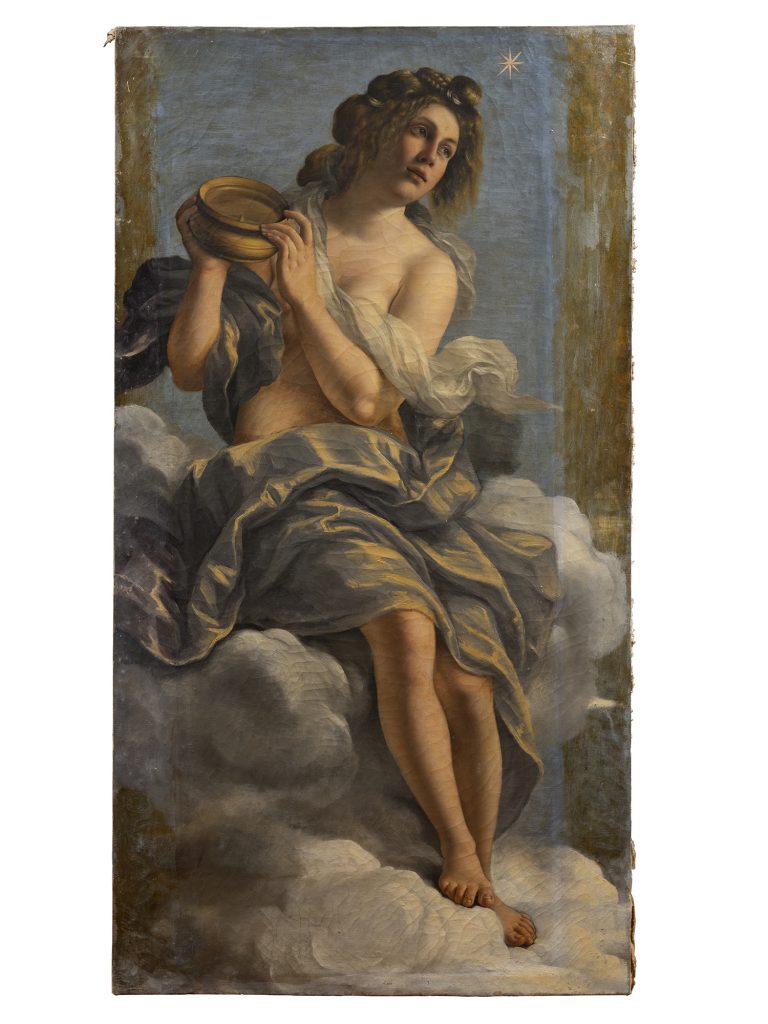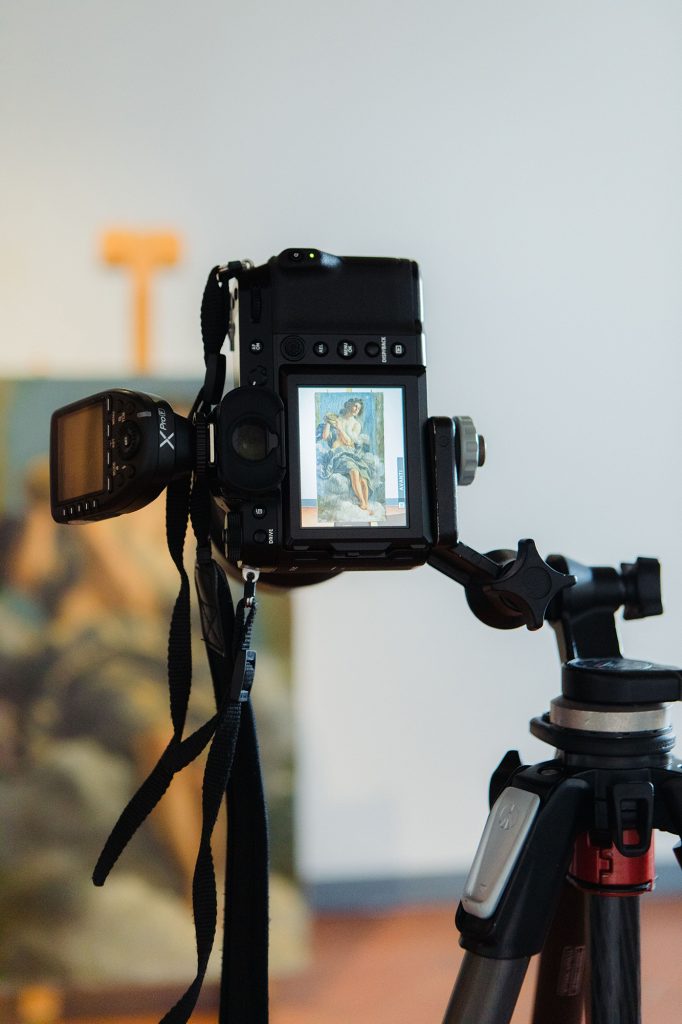The National Gallery in London: Where to Start?
Having lived in London for the past three years as an art lover, I have had more than my fair share of questions about where to “start” at the...
Sophie Pell 3 February 2025
31 January 2023 min Read
Until April 2023, the Casa Buonarroti Museum in Florence will host the restoration of Artemisia Gentileschi’s Allegory of Inclination. This is a unique chance for visitors to witness the restoration process, carried out in the same exact spaces where Gentileschi originally worked, and get a closer look at her masterpiece.
There are figures in the history of art that are intriguing, and whose life is fascinating beyond our imagination. Such people not only received the greatest achievements in their lives and careers, but were also real pioneers and innovators, and their influence still reverberates to this day. One of those fascinating figures is, without any doubt, Artemisia Gentileschi (1593-1653).
The first female artist to become a member of the Accademia di Arte del Disegno in Florence, she made a name for herself as one of the most prominent painters of her time, and traveled through Italy and Europe to develop her career.
Now, the restoration of her Allegory of Inclination in Florence is about to shine a new light on the painter and her amazing craft. The restoration will be carried out inside the Casa Buonarroti Museum in Florence and will allow all visitors to take a closer look at Gentileschi’s extraordinary work and the restoration process itself.

Artemisia Gentileschi, Allegory of Inclination in direct light. Photo by Ottaviano Caruso. Courtesy of Casa Buonarroti Museum and Calliope Arts.
Originally painted in 1616, Gentileschi’s allegorical figure holds a compass and is placed right under the North Star. It was painted to adorn the ceiling of the Galleria inside Casa Buonarroti, a complex designed by Michelangelo Buonarroti the Younger to glorify the life of his famous granduncle.
With a reference to Galileo, the painting was a unicum at the time: as a woman, Artemisia Gentileschi was among the few artists who could portray nude women, as she originally did in her Inclination. However, around 70 years later, the nudity of the figure became a source of concern for the commissioner’s great-nephew, Leonardo Buonarroti. So in 1684, he called the painter Baldassare Franceschini, also called Il Volteranno, to add heavy drapery in impasto to cover the beautiful figure in an attempt to preserve the decorum of his wife and children, significantly modifying the original work. Il Volterrano not only added the draperies, but also some shadows and details to the figure, contributing to the creation of the masterpiece we see today.
The original painting came to be at a time when Artemisia Gentileschi was still trying to make a name for herself in Florence. The commission for Casa Buonarroti became her first real “business card” and aided her emergence onto the Florence art scene, a cultural climate in which she would later produce some of her greatest paintings – including her series of Judiths – for the Medici court.
Gentileschi joined a group of artists and intellectuals that comprised not only Michelangelo the Younger, but also figures such as Galileo Galilei, opera composer Francesca Caccini, as well as the Medici family themselves. In this rich cultural milieu, Gentileschi not only thrived and was able to paint some of her greatest masterpieces, but also built a strong social network.
Nowadays, with the same spirit of collaboration, the Artemisia UpClose project will bring together different associates to promote a renewed interest in the work of this great painter. Developed with Casa Buonarroti Museum and Foundation, the project is supported by Calliope Arts – a non-profit organization based in Florence and London that promotes public knowledge and appreciation of art, literature, and social history from a female perspective – and British art collector Christian Levett, founder of the Mougins Museum of Classical Art in France and the Levett Collection home-gallery in Florence, featuring artworks by major female Abstract Expressionists.
The restoration project, which is just beginning in Florence, will help not only analyze the current state of the painting but will eventually render a clearer idea of the original picture Gentileschi painted in 1616, before Volterrano’s intervention. The painting, removed from the Galleria ceiling, is now stored in the museum’s Model Room, where the restoration will take place in the public eye.
“We wanted Artemisia’s painting to be restored inside the museum on public view, to enable visitors to rediscover it, step by step, and at the same time, experience its precious Gallery, commissioned by Michelangelo Buonarroti the Younger, great nephew of Michelangelo the Great, and Artemisia’s first protector and early admirer,” says the director of the Casa Buonarroti, Alessandro Cecchi, in the projects presentation.
“Through working photographs, diagnostic imaging, and analysis, we will be able to determine the exact technique Artemisia used, correctly map the work’s condition, and monitor our treatment plan for the painting,” says the project’s conservator Elizabeth Wicks, who heads the team of restoration scientists, in the press release. “Due to the historic nature of the repaints, it is not possible to remove them from the surface,” Wicks explains, “but the scope of our diagnostics will facilitate the creation of a virtual image of the original that lies beneath the surface of the painting, as we see it today.”
But the restoration will surely bring more surprises. For example, upon removing the Allegory of Inclination from the Galleria ceiling, the researchers discovered that the canvas is 23 cm wider and 6 cm higher than expected. These parts of the work were hidden behind the frame and the public is now able to see the painting in its entirety for the first time.
The results of the restoration project will eventually converge in an exhibition, a real once-in-a-lifetime occasion to peek behind the scenes of such meticulous work and discover exactly what the Artemisia UpClose project achieved.

Installation view: Artemisia UpClose project, Photographic documentation of Artemisia Gentileschi’s Allegory of Inclination. Photo by Olga Makarowa. Courtesy Casa Buonarroti Museum and Calliope Arts.
Scheduled to run from September 2023 to January 2024, Casa Buonarroti’s ground-floor exhibition rooms will host a show that shares the “virtual journey beneath the veil.” The Artemisia UpClose exhibition will focus heavily on the scientific side of restoration.
Infrared research, reflectology, digital microscopy, x-rays, radiographs, and multispectral imaging are all techniques being used to restore the painting in the public’s eye, providing us a privileged view of her technique, as we raise awareness of the artist’s Florentine period, her achievements, and the important network of contacts she made.
Featuring images from the restoration process, as well as documents and details about Gentileschi’s life and work in Florence, the exhibition will be a great chance to study this extraordinary figure and visit the palace where she worked.
DailyArt Magazine needs your support. Every contribution, however big or small, is very valuable for our future. Thanks to it, we will be able to sustain and grow the Magazine. Thank you for your help!